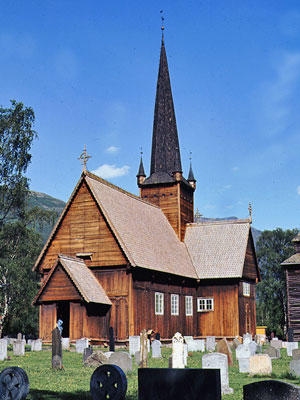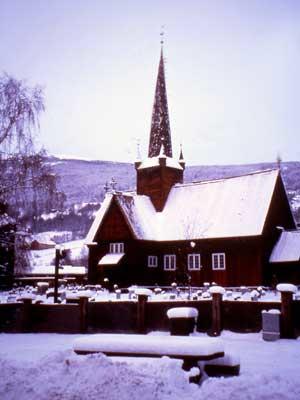Vågå Old Church
Set in the landlocked mountains north of Jotunheimen, Vågå Old Church represents a singular case among the renowned stave- or timber-framed churches of Norway. On the site of the current church, it is believed that a stave church, a medieval timber-frame structure, replaced a pagan temple as early as 1030, during the advent of Christianity in the region. The present church was built in place of that building between 1625 and 1630 by Werner Olsen, using a similar construction technique. Olsen incorporated many elements from the previous church, thought to have been the second oldest stave church in Norway, into the new church. Hundreds of wooden churches in Norway have perished in fires; their sometimes-remote settings do not allow rapid response from firefighters. Arson caused by anti-religious groups endangers the churches and necessitates specialized protective measures for their preservation. Vågå Old Church is a rare and important survivor.
1996 World Monuments Watch
After being included on the 1996 World Monuments Watch, the site received much media attention, furthering awareness of the church’s trouble on the national and international levels. WMF assisted with the installation of a surveillance system to protect the church from vandalism. Additional activities were able to be undertaken through donations from the municipality and Norwegian private companies. Installation of the system was completed at the end of 1997.
For many centuries, over 1,000 stave churches decorated the Norwegian landscape. Today less than 30 remain. Though not a medieval stave church, the incorporation of many elements from the original structure into the seventeenth-century Vågå Old Church makes it a unique building in Scandinavian architectural history. Preservation of these historic wooden churches requires great care and protective measures to ensure their survival.


